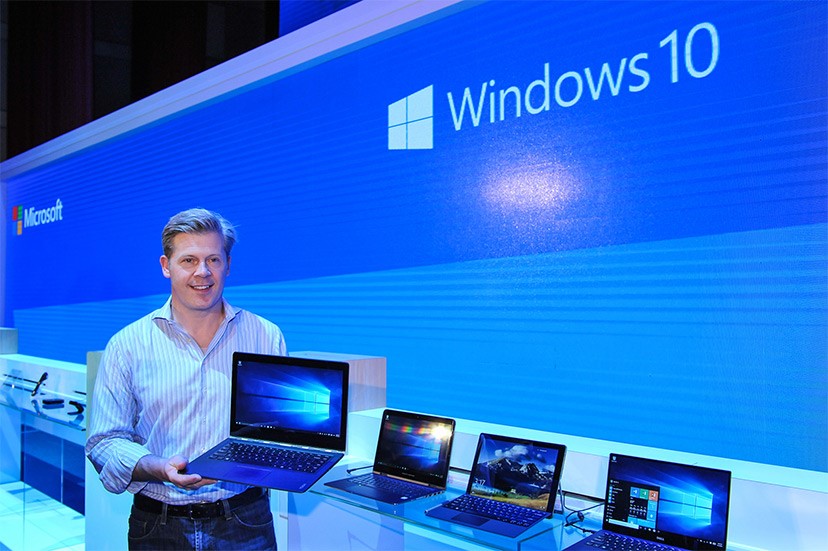Microsoft fans shouldn't have to be defending Windows 10's ads
5 min. read
Published on
Read our disclosure page to find out how can you help MSPoweruser sustain the editorial team Read more

Last weekend I penned a piece about Microsoft’s advertising practices in Windows 10. I noted that the firm was traveling down a slippery slope, slowly escalating the level of advertising seen in each version of Windows from levels which could be seen as kinda-sorta- helpful to useful tips to ads which limited themselves to native apps to full blown advertising in the OS.
Paul Thurrott over at Petri has an article on why he thinks this is happening that you can read if you’re interested. I’m not going to rehash it and talk about what’s going on. What I’m going to focus on today are the most common defenses leveled by some media pundits and Windows fans in order to diminish the complaints.
“But Apple and Google do it too”
This is what is known in logic as a “Tu Quoque” fallacy or as all people who deal with small children know the “How come he can do it but I can’t” argument. It’s not really an argument so much as it is pointing or that someone else does the same thing, ergo they should be allowed to do the same thing. In most cases, it is a logical fallacy because it a) is an attempt at deflection from the topic at hand and a red herring, and b) the comparison is never really appropriate.
https://twitter.com/ow/status/840082430346186752
Take this example where Owen Williams compares the uproar over Windows 10’s advertising and notes that Apple’s Mac OS pops up a notification whenever default browsers are changed. I’m sure some people are complaining about it, but it is disingenuous to compare to this to Windows because Microsoft does exactly the same thing in Windows 10 when you deviate from the Microsoft recommended defaults and that is not what people are complaining about.
what annoys me about google is if you login to Gmail on edge It will suggest to use Chrome. Even if you dismiss it returns later
— T Ali (@tauheedul) March 12, 2017
Another popular example is that Google advises users that YouTube and Gmail work better in Chrome when visited using external browsers. Strictly speaking, this is probably true, and this is probably an advert for Chrome. That is fair enough. What is not mentioned here is that these also aren’t the type of ads people are complaining about. Much like with the Safari example above, Microsoft also promotes Edge if you open Bing or Outlook in Chrome or other non-Microsoft browsers. We don’t talk about this because it’s assumed to be fair game, and it isn’t directly comparable to Microsoft surfacing ads in Windows 10 itself.
What would be comparable would be examples of Apple or Google surfacing ads in their OS in places like the File Explorer on Android phones, Springboard, Google Now Launcher/Pixel Launcher, Finder etc. Until these manufacturers begin to push and promote ads for store apps and other apps in their various OSes, this line of defense just doesn’t work.
“But Windows 10 is free, how do you expect Microsoft to recoup their investment”
Google target ads at you on all their free services. Windows 10 update was free. But don't condone ads in paid OS. @Mkeallison @prjman
— Ken Heslip (@kenhes) March 13, 2017
This is a terrible argument on several fronts.
Firstly and briefly, unless you’re a Microsoft shareholder or employee, you have no business worrying about Microsoft’s bottom line. Your contribution to Windows revenue begins and ends at the online or in-store checkout where you presumably paid for it with hard-earned money.
Secondly, Windows 10 is not free. It comes pre-installed with PCs in which case it is purchased by OEMs and then the pricing is bundled in with that of your PC, or it can be purchased by users from Microsoft who sells it at a base price of £109.99. One way or another, you’re paying for Windows.
Finally and more importantly, there’s is an issue of trust and trust being violated there.
Microsoft promised explicitly that Windows 10 would be free, They made great pains to explain that the Windows 10 upgrade was not free with an asterisk or with hidden terms and conditions but genuinely free. While some online pundits and commenters argued that Microsoft giving out Windows 10 for free meant that Windows 10 was being monetized and that Microsoft would slowly take control from the user, they were dismissed as crackpots and spreaders of FUD.
Playing devil’s advocate for a moment here and assuming that this is what Microsoft is actually doing, this implies that Microsoft deliberately lied to their customers when they marketed Windows 10 as free with no strings attached. Much like with the Windows Phone 8.1 upgrade “promise”, OneDrive kerfuffle a while ago, this erodes trust in Microsoft’s word. It implies that Microsoft can promise something explicitly, and then change it once you’re sufficiently locked-in.
Microsoft has introduced a new setting in the Windows 10 Creators Update that allows users to lock out non-store apps. Currently, distrustful people are theorizing that this feature could be made from an option and turned into the default setting. While this is clearly nonsense, it is going to be harder to convince those users of that fact as the same users who dismissed Windows 10 ads are now the same ones who claim it was always “obvious”.
For users who are satisfied with Windows 7 or 8 and already distrustful of Windows 10 because of its somewhat overblown privacy issues, this “defense” doesn’t make it any more attractive.
“But you can turn it off”
https://twitter.com/mattjbrown/status/841066197076566016
You could turn Cortana off before too. Simply speaking, would you turn it on if it was off by default? If no, then who does it benefit.
There’s nothing wrong with ads per se, and some companies and OS makers are even strategising with using ads to subsidize their phones for people with smaller budgets. Amazon does it with the Moto G4 and no one’s compalining about that. The difference here is that it’s not done sneakily, it’s not done under the table, and it certainly isn’t done after charging the buyer £3000.








User forum
0 messages